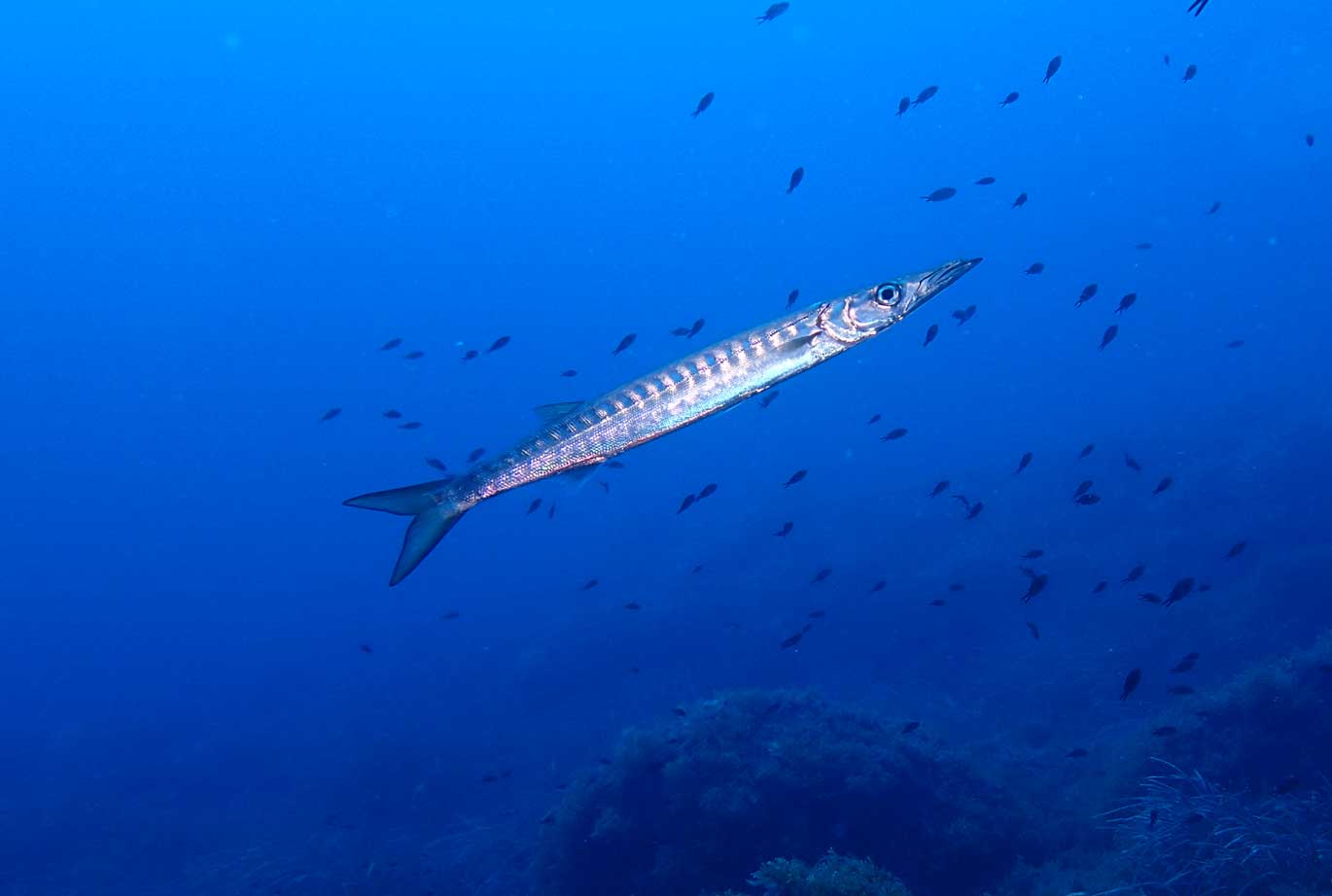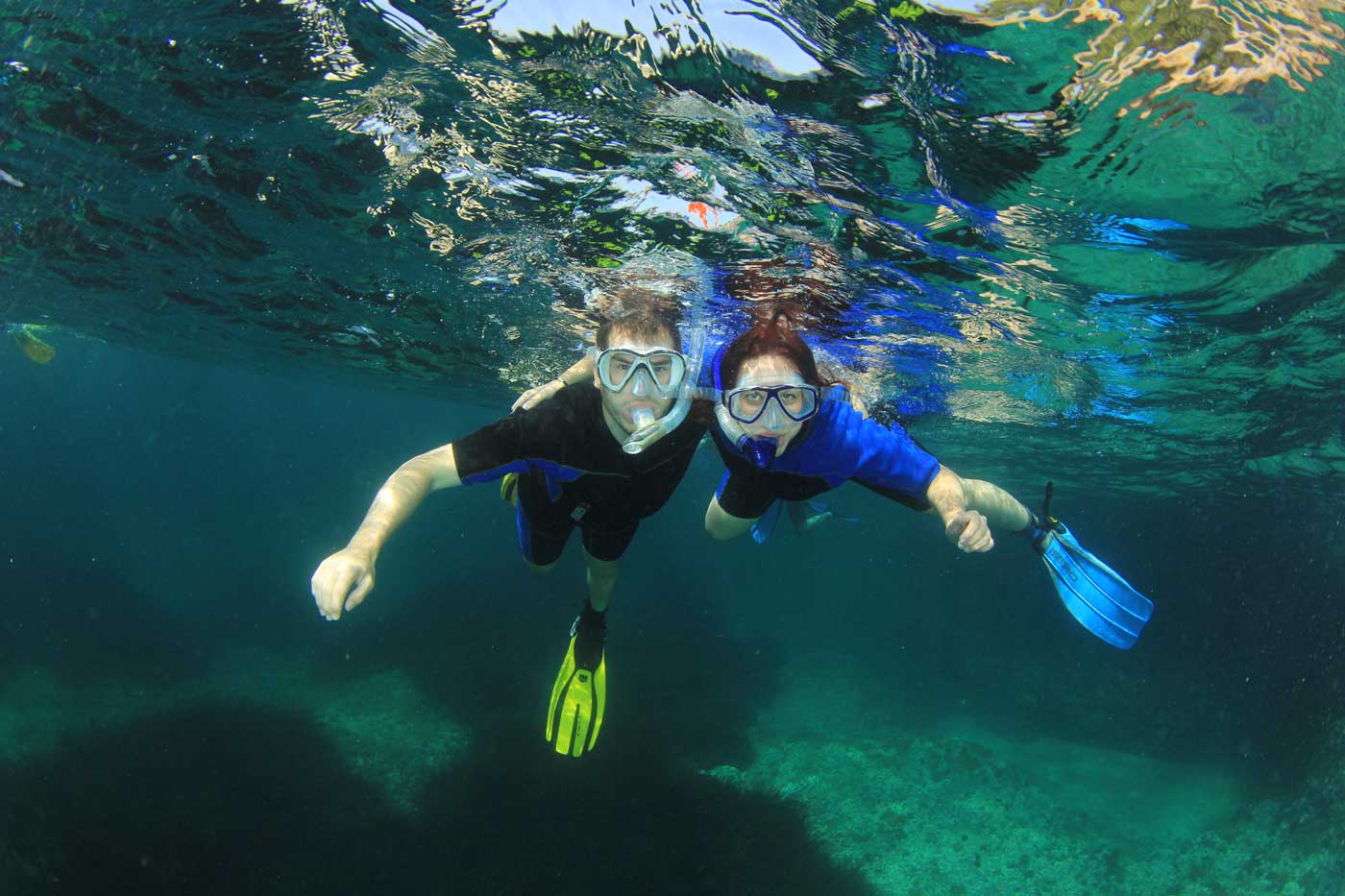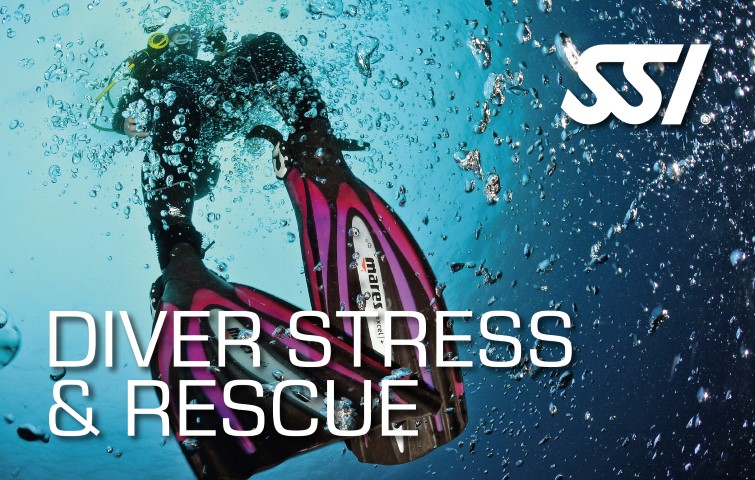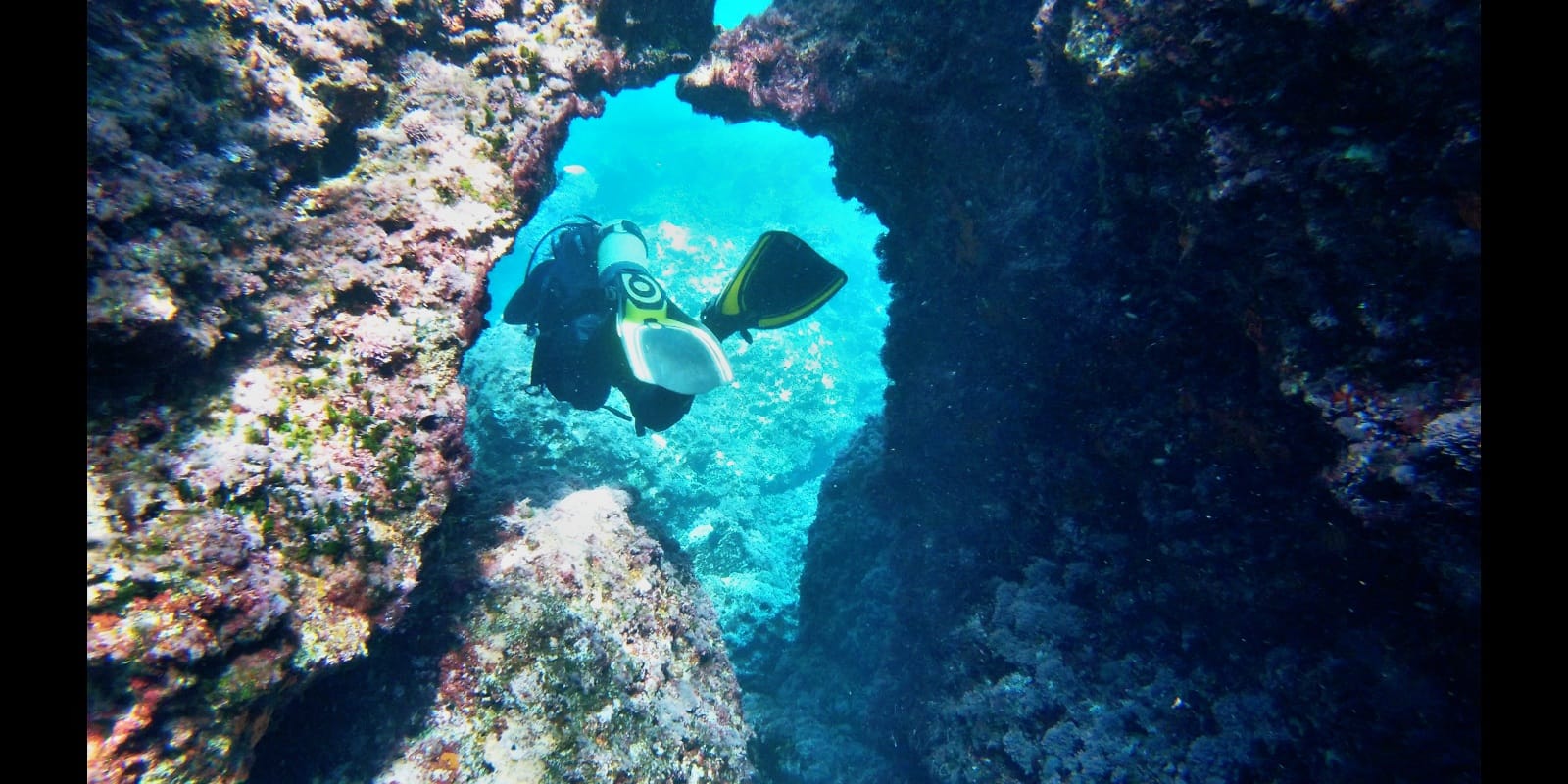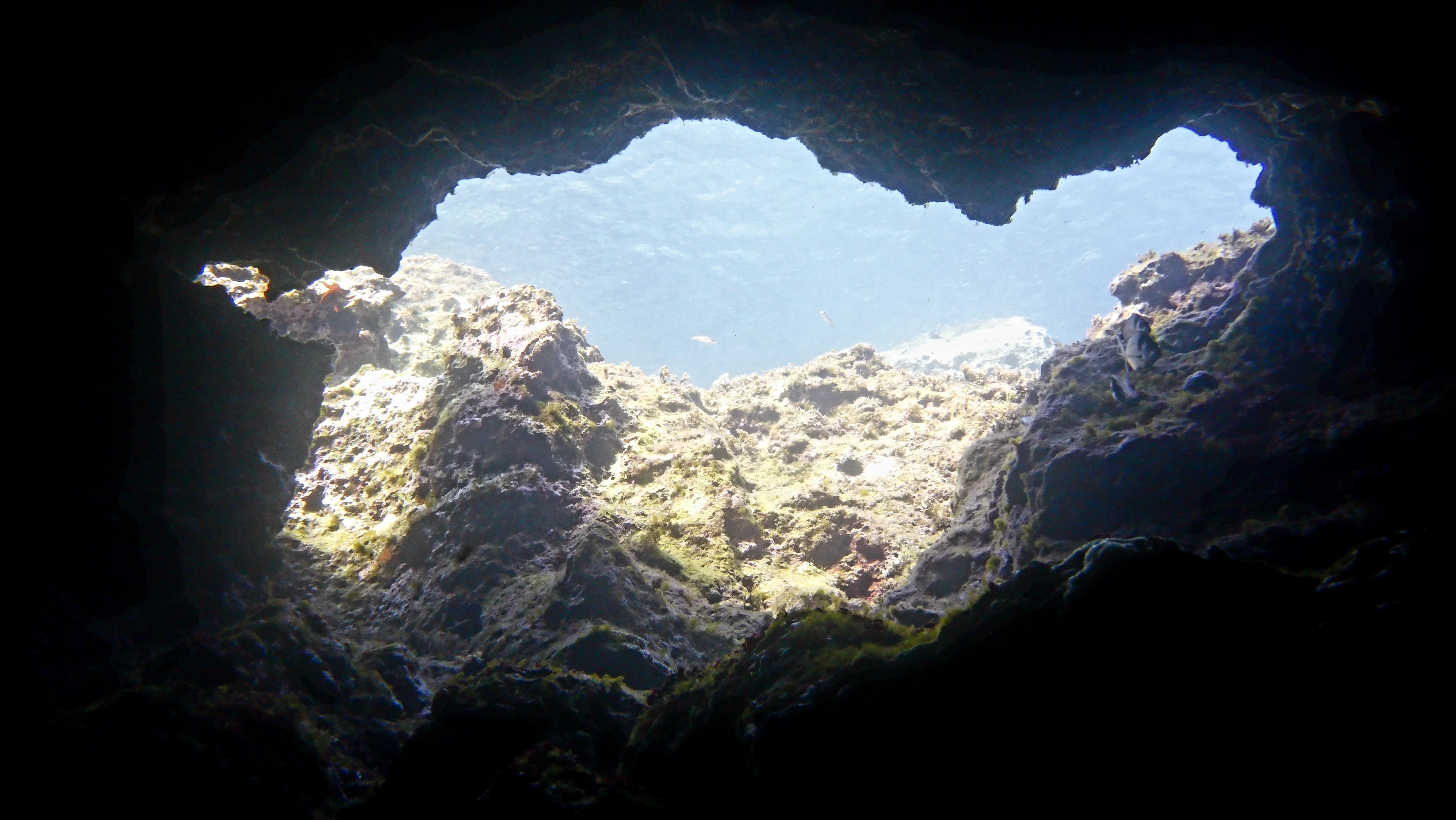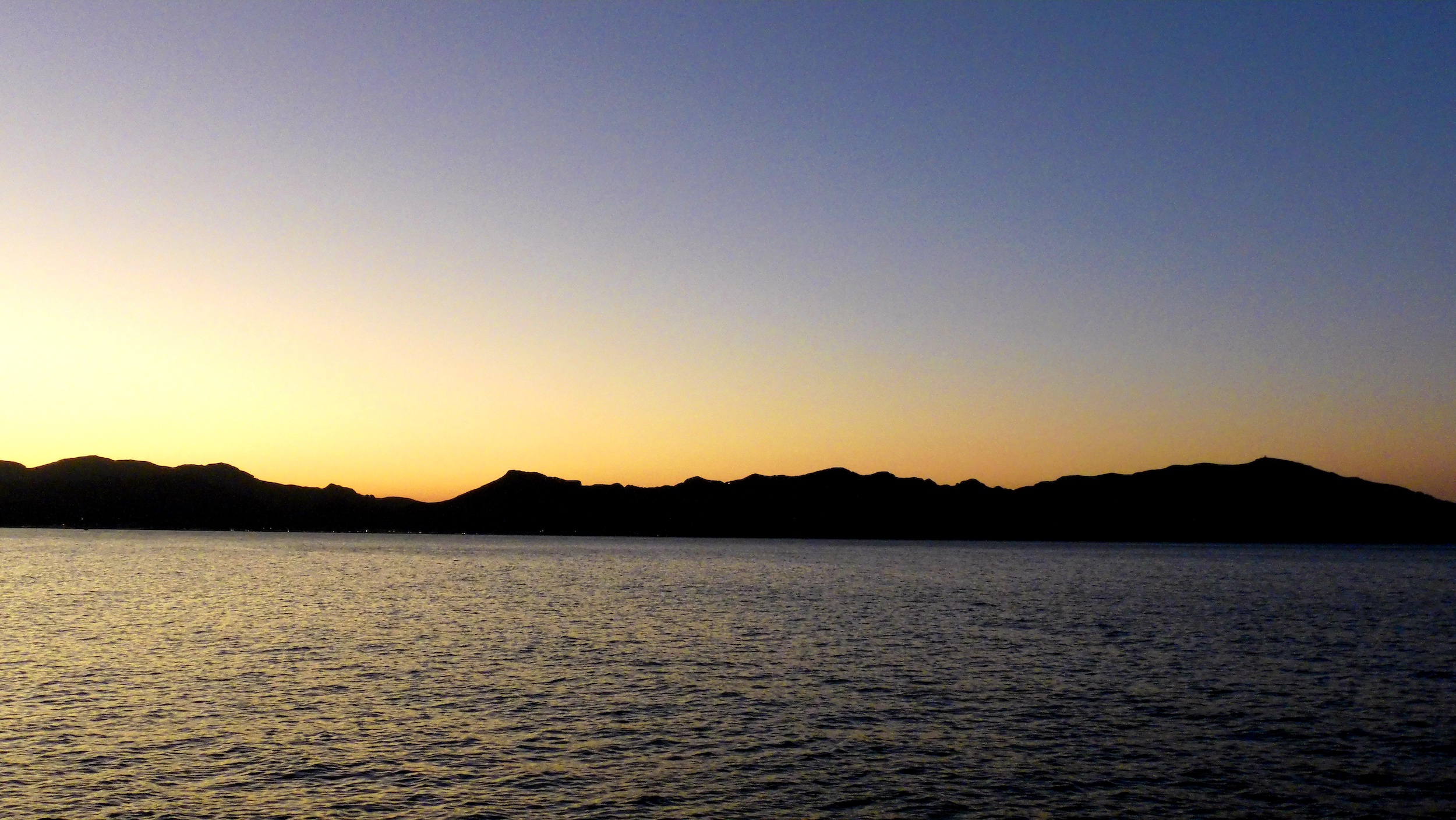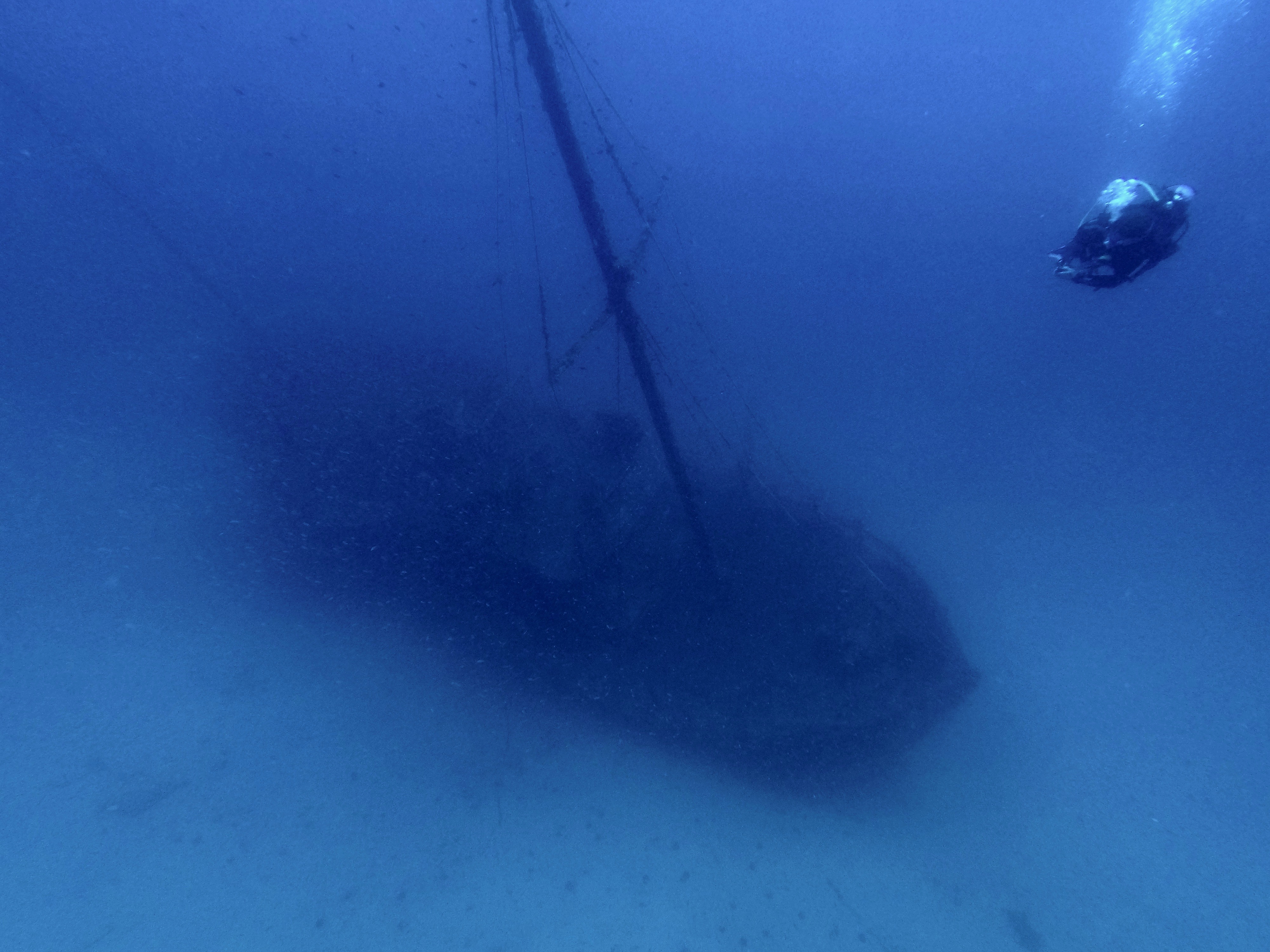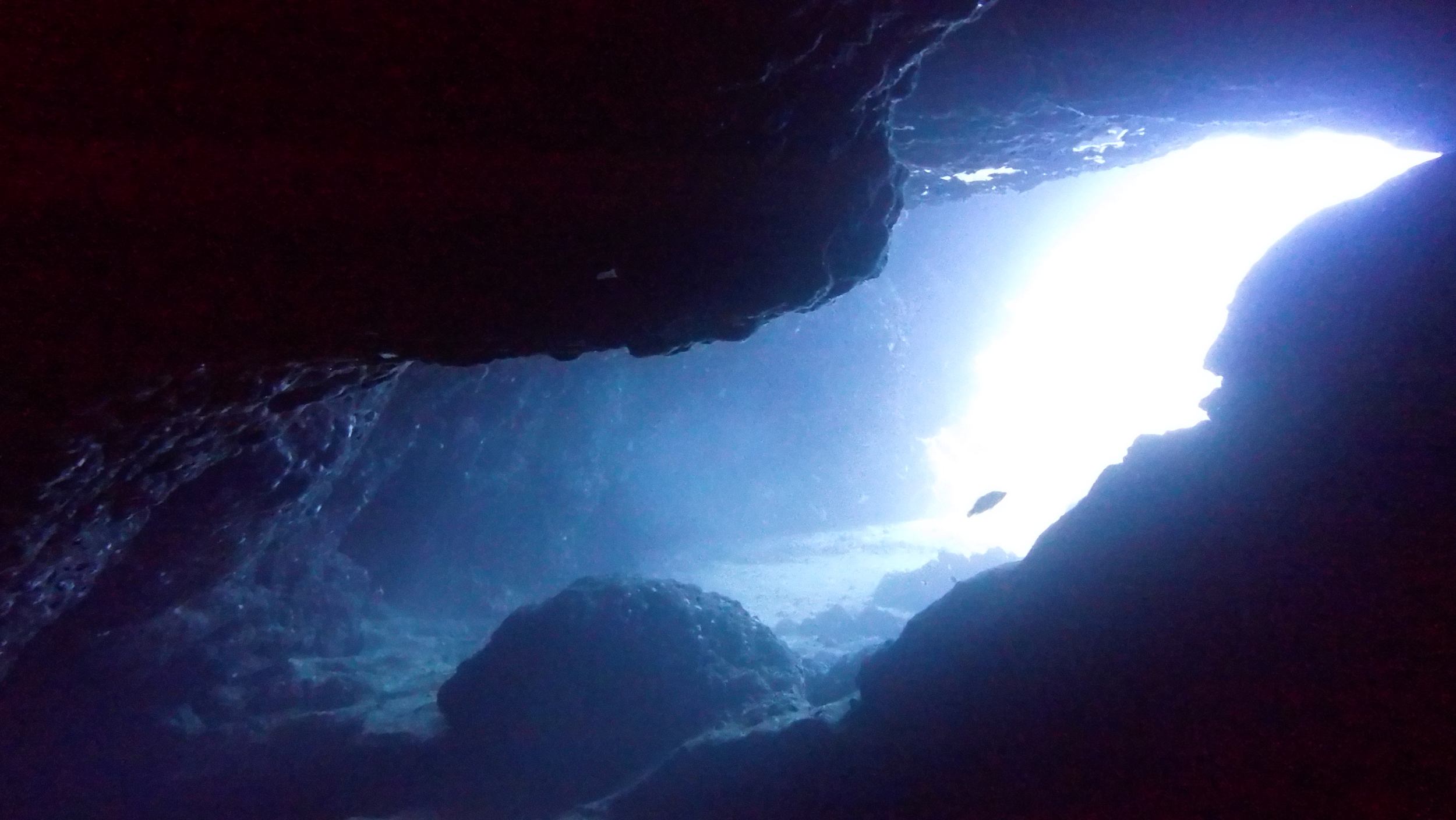See our collection of sighted fauna while exploring the bay of Pollensa between Cap Pinar and Cap Formentor...
The underwater fauna of Mallorca
With its crystal clear water, cliffs, caves, сaverns and astonishing underwater life, Mallorca is one of the best places for diving in the Mediterranean. As there are quite a lot of protected underwater reserves, the underwater flora and fauna is being able to flourish and show its rich diversity.You will mostly see smaller swarm fish, barracudas, nudibranchs, scorpionfishes, the common octopus and cuttle fish but also morays and rays are sighted sometimes. Check out our guide to the Mallorcan underwater fauna below!
With its crystal clear water, cliffs, caves, сaverns and astonishing underwater life, Mallorca is one of the best places for diving in the Mediterranean. As there are quite a lot of protected underwater reserves, the underwater flora and fauna is being able to flourish and show its rich diversity.You will mostly see smaller swarm fish, barracudas, nudibranchs, scorpionfishes, the common octopus and cuttle fish but also morays and rays are sighted sometimes. Check out our guide to the Mallorcan underwater fauna below!
Lesser Amberjack (Seriola Fasciata)

The lesser Amberjack is usually found in the Atlantic Ocean but its population reaches out into the Mediterranean Sea and into our mallorcan waters. On our trips you mostly see juvenils approximately 30cm of size, while the larger adults (approx. 50cm) are usually found deeper than 55m.
During our dives they stand out due to their habit to follow the divers in swarms between 5 and 30 animals. They are quite courious and not too afraid, keeping still you can get nice glances of these fast predators.
Mediteranean Barracuda (Sphyraena sphyraena)
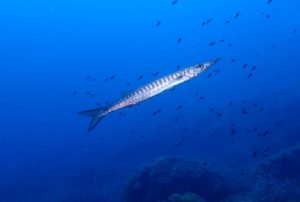
The Barracuda is probably the most seen bigger predator during our dives. It usually occurs in groups between ten and two hundred animals. Most of the time you will see smaller and regular sized barracudas between 30 and 50cm. Occasionally though we see one or two large ones measuring up to a meter and more.
If you move calmly and together with the dive group you can get quite close and even inspect their teeth.
Broadnosed Pipefish (Syngnathus typhle)

The Broadnosed Pipefish is a close relative of the sea horse and usually hides within the posedonia (seaweed) to hide from greater predators and feed on plankton. Because of its colouring the broadnosed pipefish is quite difficult to identify, but luckily our guides have developed a great eye to find them.
Like the seahorses the broadnosed pipefish has a sex-role reversed mating system. They breed in the summer and after being born the male takes care of the fry.
Common Cuttlefish (Sepia officinalis)
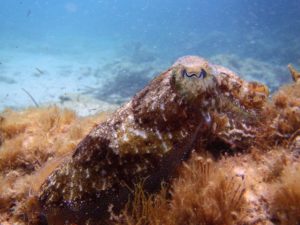
The common cuttle fish is a large (up to 50cm) and well-known species of the cuttle fish. In the subtropical mediterranean sea they reach aboyt 30cm. During autumn and winter they move to deeper waters (100 – 200m) while coming to shore for spawning in spring and summer.
During our shore dives (inclduing Try Scubas) adultsare sighted regularly from February to July, juvenils only a few centimeters in size are sighted in May and June. As they hunt during the night. With a bit of luck during a night dive you’ll see them hunting for small fishes, crustaceans, molluscs and even other cuttlefish.
Common Octopus (Octopus vulgaris)
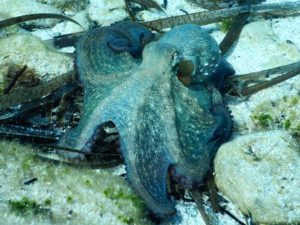
The common octopus is found all over the world prefering shallow rocky coastal water. Therefore the conditions around Mallorca are offering a nearly perfect habitat for this species. Usually you can spot an octopus in 80% to 90% of our dives, though sometimes it is quite difficult to find it especially since most of the time it is hiding in a small hole.
The common octopus has an incredible nerve system. About twice as many neurons are found in their arms in comparison to their brain. You could say that they have a brain for each arm coordinated by the biggest wich is inside their head.
Felimare picta
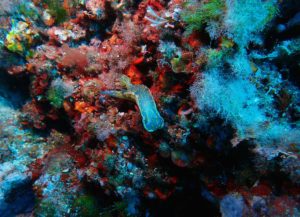
This nudibranch is one of the most-colorful animals you will sight during our dives. The type locality of felimare picta is actually Palermo in Sicily, though it is found in all the mediterranean sea as well as the estarn atlantic ocean and the Gulf of Mexico.
In spring you can find young examples of about 1cm which are completely white except of a yellowish/greenish band on their back. While growing their typical colouration develop, but be careful outside the mediteranean the blueish area is found to be much darke runing into violets and black.
Dusky Grouper (Epinephelus marginatus)
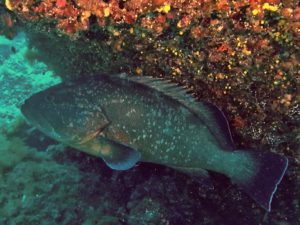
The Dusky Grouper is one of our favorites to sight while scuba diving. In general they appear to be quite shy, while juvenils (< 30cm) are visited more regularly in shallower waters (up to 15m) adults (up to 90cm) and especially bigger adults (up to 1,5m) are found on more remote and deeper dive sites. If you are keen to see one of those majestic fish stay more to the front of the group, once sighted they are mostlikely going to leave rapidly.
An interesting fact: the Dusky Grouper is a hermaphrodite meaning they change their gender as adults depending on size and age from a female into a male.
Mediterranen Moray Eel (Muraena helena)
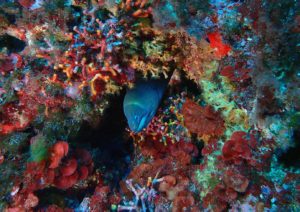
Also known as the Mediterranean moray Eel is usually found in coastal waters of the Mediterranean Sea and the eastern Atlantic Ocean. They prefer rocky bottoms and usually spend their day in cavities and clefts between rocks or within steep walls. Sometimes you are lucky to find a moray passing either close to the bottom or to the wall.
During the night, the Mediterranean moray is becoming more active to hunt fish, crayfish and cephalopods.
Ornate wrasse (Thalassoma pavo)
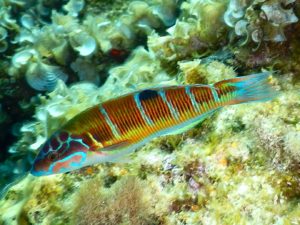
The ornate wrasse is found in the rocky coastal regions of the Atlantic Ocean and the Mediterranean Sea. The females of this species are greenish-brown with a dark spot on each scales as well as several blue stripes.
The males on the other hand have red heads with blue marking and a blue vertical stripe with red margins near the pectoral fin.
Like the clownfish the ornate wrasse is a hermaphrodite and females may transform into males.
Painted comber (Serranus scriba)
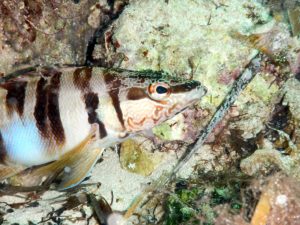
The painted comber is part of the grouper family and habitats the shallower coastal waters of eastern Atlantic Ocean, the Mediterranean Sea and the Black Sea.
In our dives we spot this grouper mostly close to steep walls or rocky bottom with cavities to retreat to. Unlike other hermaphrodite species this one can fertilize itself.
Peltodoris atromaculata
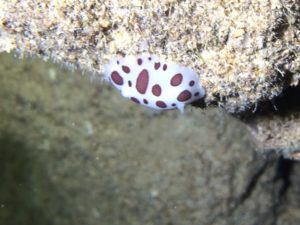
This nudibranch also known as dotted sea slug or sea cow is most abundant between June and Spetember although adult individuals can be sighted all year.
Common Stingray (Dasyatis pastinaca)
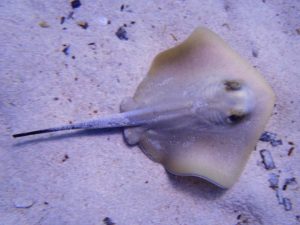
The common stingray is found usually burried within the sand. Adults are sighted sometimes passing by a group of divers, while juvenil examples can be found from July on in large shallow sandy areas.

